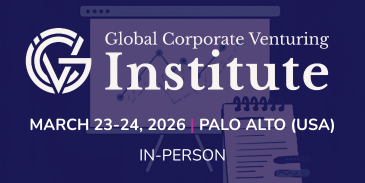During fiscal year (FY) 2012, 705 start-up companies were formed, which was a 5.1% increased compared to the prior year.
The US-based Association of University Technology Managers (AUTM), a non-profit organisation of academic technology transfer staff, saw an increase in university licensing and start-up activity last year, according to early results from its annual survey, while a separate study found an increase in the groups themselves.
During fiscal year (FY) 2012, 705 start-up companies were formed, which was a 5.1% increased compared to the prior year. After netting out start-up failures, there was a 1.9% increase to 4,002 start-ups still operating as of the end of the period, according to the AUTM US Licensing Activity Survey: FY2012, which is due for full release at the end of this calendar year.
These start-up companies formed by 70 institutions surveyed employed 15,741 full-time employees.
Sean Flanigan (pictured), AUTM president since March and assistant director of technology partnerships for University of Ottawa, Canada, said: “When people think about job creation, they don’t typically think about universities, but the data show that universities substantially contribute to the creation of new jobs in this country [the US].
“Although building early-stage companies is fraught with challenges, there is more mentorship, through groups like Startup America, and new financing sources, such as crowdsourcing, that are helping. There is no ready-to-wear system for tech transfer offices to use and so there is an explosion of different models and trying ideas. The system to foster innovation is innovating itself and an acceleration of creativity. There has been more initiatives publicised in the past two to three years than in the five years before.”
This was the second year in which AUTM asked questions specifically targeted at ascertaining the economic impact of academic technology transfer as the association responded to the “mission creep” being imposed on its members to show how they were benefiting the economy rather than institution they worked for.
Flanigan said: “The growth of unfunded mandates – mission creep – on directors of tech transfer offices is the number one statement [of concern]. They have licensing down pat but are being asked ‘what else can you do?’ and adding an economic imperative to research and education goals. Graduating highly-educated people is these days not enough for alumni, administrators and politicians.”
Flanigan added the start-ups were able to spin out due to the quality and amount of basic and applied research funded at the institutions.
Institutions responding to the survey reported $36.8bn in net product sales from licensed technologies in FY2012, with $2.6bn (+6.8%) as the total license income back to the academic group.
The survey respondents made 22,150 US patent applications filed, an 11.3% increase over the prior period, with 483 executed licenses containing equity (+16.1%).
Flanigan said there was more scrutiny in the US on patents and intellectual property (IP) and finding ways to foster job creation than at any time since the Bayh-Dole Act, also known as the Patent and Trademark Law Amendments Act, passed in 1980 that allowed small businesses and non-profit organizations, including universities, to retain title to inventions made under federally-funded research programmes.
But the attention is causing some potential confusion.
Gene Quinn, president of IPWatchdog, said on his blog in response to the AUTM figures: “At present patents and innovators are under attack by some Silicon Valley tech giants, the White House and members of Congress who are more interested in grandstanding than seeking meaningful legislative proposals that are likely to address litigation abuse….
“Those advocating for the weakening of patent rights and dismantling of the patent system, not only ignore the reality that patented innovation leads to economic development, but their ignorance will cause them to be unable to compete with cheaper imports once they have succeed….
“University innovations have laid the foundation for thousands of start-up companies since 1980; in fact well in excess of 7,000 start-up companies have been formed.”
Separately, a survey of 35 US and Europe-based universities by Research and Markets has published its “Global Higher Education Technology Transfer Benchmarks, 2013 Edition” that found the mean number of employees per technology transfer office in the sample rose slightly to 11.47 last year from 11.33 in 2011, with mean total spending on salaries rising $1,367,012 from $1,316,142 in the same period.
The mean number of direct employees in the technology transfer office with more than five years of service is 5.45, with a median of 1.80.
The number of lawyers employed directly by the technology transfer offices in the sample dropped from 1.06 to 0.78 but the mean number of outside law firms used by the technology transfer offices in the sample was 9.06, although they were expected to reduce spending on outside legal counsel this year.
Patent maintenance accounts for a little more than 28% of the legal expenditures by the technology transfer offices in the sample.







